|
Varicose veins are abnormally dilated, tortuous (ropey) skin surface veins that are usually associated with valve failure and abnormally high vein pressure. Valve failure allows backward flow of blood in the standing position; the varicose veins therefore progressively dilate when the person is standing.
They are often classified as either saphenous or non-saphenous, on depending on their drainage. It is important to appreciate that visible, varicose veins are usually just branches (also called tributaries) of major skin veins. The problem (valve failure) may localized to the branches alone, or both the branches and the major vein trunk that drains them.
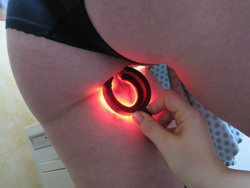
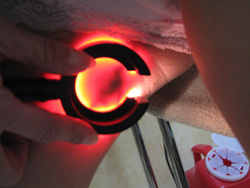
Saphenous Varicose Veins:
These varicose veins drain either into the great saphenous vein or the small saphenous vein. When the valve failure affects the main vein trunk and the branches, the varicose veins are often very large and usually overlie the vein trunk.
- The great saphenous vein starts from the inside of the ankle and travels up the inside of the leg to the groin.
- The small saphenous vein starts from the outside of the ankle and travels up the calf to the back of the knee.
Non-Saphenous Varicose Veins:
These varicose veins, which are often smaller than saphenous ones, usually drain into a diseased perforator vein. Blood flow bypasses the two saphenous systems because perforator veins drain directly into deep veins inside the legs. Perforator veins are normally very small and allow flow only from the skin surface inward. When perforator vein valves fail, normal flow reverses and blood moves outward to the skin surface at high pressure.
Non-saphenous, varicose veins can occur anywhere but are most often on the lower leg (ankle perforators), around the outer knee (lateral perforators), or the thigh (pelvic and gluteal perforators).
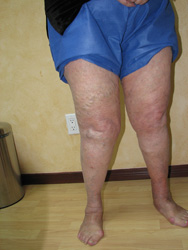
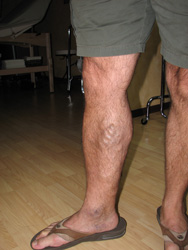
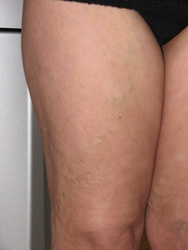
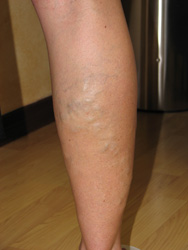
|